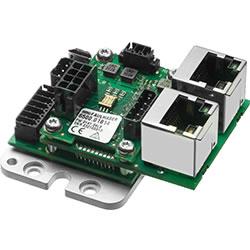TextureJet publishes White Paper on the future of edge finishing
TextureJet's Stat® technology is now proven to achieve higher quality edge finishing through increased repeatability and precision than the current methods utilised in edge finishing of aerospace components.
In recent testing, detailed in a White Paper published by TextureJet this week, TextureJet demonstrated how its electrochemical jet machining technology offers distinct advantages in terms of safety, sustainability and repeatability compared to current methods in edge finishing.
The results showed an increase in repeatability and overall tighter tolerances with an increase of more than 110% in repeatability in comparison to robot automated brush deburring and an increase of over 350% compared to manual brush deburring.
The results achieved using TextureJet's Stat® technology were compared to the specifications of widely used automated and manual brushing deburring methods. These allow for a tolerance of ±0.1 mm, requiring an edge break radius between 0.15 mm - 0.35 mm and an affected zone of maximum 1 mm per side.
The results showed that TextureJet's Stat® process, utilising an automated delivery system, consistently achieves edge break results well within aerospace specifications and demonstrates the scalability of creating a wide range of different radii to suit exacting part specification.
The technology can lead to significant savings due to reduction in both reprocessing and scrappage experienced with current methods.
Edge finishing for metal components can include edge rounding and edge breaking, which are techniques that can be used to make the edges of metal sheets look attractive, as well as being safe and functional as burrs and sharp edges are removed.
However, this definition understates its vital importance, in particular for components used in safety critical applications. Components under stress with untreated sharp edges can induce high stress concentrations which cause stress cracking in service and lead to complete product failure.
There are also the risks of sharp edges creating a hazard in handling and difficulties in part mating where effective clearance is required.
Edge finishing processes need to be carried out with minimal effect on component geometry or integrity with the highest repeatability.
On complex high precision parts with multiple features, edge finishing can constitute up to 30% of part costs, create bottlenecks and be significantly impactful on yield given that by the point that edge break is required, a considerable amount of "value-add" has been invested in the part. As such, scrappage can be costly, with up to 5% of manufacturing costs in German automotive and tooling industries being attributed to rejects and reworks based on edge finishing.
Edge finishing is a crucial step in manufacturing and the results of the work conducted clearly demonstrated that TextureJet's Stat® platform technology can controllably and repeatably generate edge break features in an automated fashion, with the ability to scale the size of the radius and the affected zone as required by the design intent and operational needs.
All the results presented were achieved with pH neutral saline based electrolytes using automated delivery methods, offering distinct advantages in terms of safety, sustainability and repeatability, compared to currently utilised methods which can include the use of harsh acids, creation of airborne contaminants or a high level of manual processing.
With global expansion plans, it is an exciting time for the small company. Jonathan Mitchell-Smith, CEO and founder of TextureJet says, "We are proud to have developed the next generation of targeted and sustainable surface processing technology. Our innovative, globally patented technology can not only edge finish but also deburr, roughen, polish, pattern, part mark or remove coatings from almost any metal surface. This attractive alternative to existing technologies results in reductions in factory and toxic footprint, as well as process and operational costs. The process is flexible, easily automated, scalable, and cost-effective, making it an excellent choice for all high value manufacturing industries".
Featured Product

MOTION CONTROLLERS FOR MINIATURE DRIVES AND MICRODRIVES
FAULHABER has added another extremely compact Motion Controller without housing to its product range. The new Motion Controller is ideal for integration in equipment manufacturing and medical technology applications. With 36 V and 3 A (peak current 9 A), it covers the power range up to approx. 100 W and is suitable for DC-motors with encoder, brushless drives or linear motors.
